Revolting Creatures
-
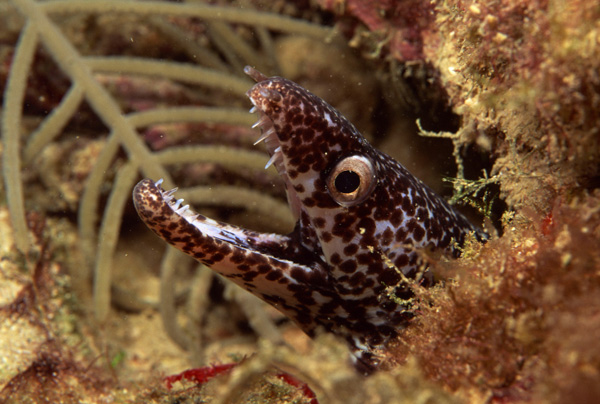 Photograph of an eel by Jupiterimages/Thinkstock.
Photograph of an eel by Jupiterimages/Thinkstock.The Eel
Perverse creatures that we are, many of us find the sight of a piece of broiled eel on a bed of rice extremely attractive. The appetite for unagi, the sweetest sushi, is causing big trouble for the eels. With nets and dams, we're messing up the most significant event in their lives, an odyssey we know amazingly little about. Their migration to spawn—from freshwater to the ocean depths—is a feat of navigation and endurance that makes the march of the penguins look like the proverbial day at the beach.
For more, read the full text of "Spaghetti With Eyes." -
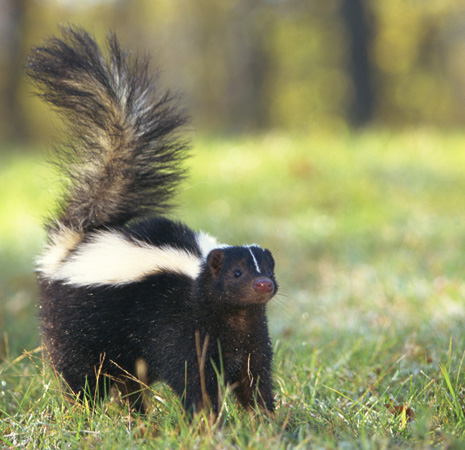 Photograph of a skunk by Comstock Images/Thinkstock.
Photograph of a skunk by Comstock Images/Thinkstock.The Skunk
It is the skunk's confidence in that potent defensive weapon that makes its personality appealing. The critters, the size of a small cat but with a wider rump and a bit of a waddle, are the opposite of aggressive. Most of the time they're curious, playful, fearless, and calm (though in late winter, mating season, the males go haywire). A devil-may-care attitude does not serve them well on the highway. The poor creatures stick their tails straight up as a warning to a car. It doesn't work; most of us know the smell of skunk musk from road kill.
For more, read the full text of "Skunks." -
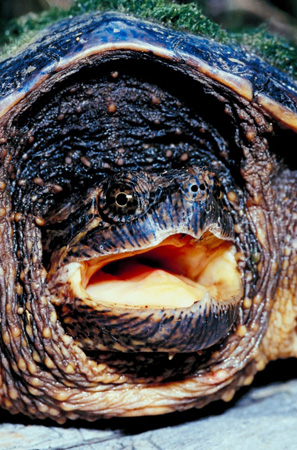 Photograph of a snapping turtle by Jupiterimages/Thinkstock.
Photograph of a snapping turtle by Jupiterimages/Thinkstock.The Snapping Turtle
They're shy but not beautiful, these creatures of the mud, and I have seen them up close. A couple of summers ago, I was swimming in my upstate New York pond and saw, a few yards away on the surface of the water, a curious combination of moving body parts. There was a glossy, ridged back, then another glossy back, a scaly paw with bearlike claws, and part of a thick, thorny tail.
Breaking any previous pond freestyle record, I swam to shore.
For more, read the full text of "'These Dirty Filthy Mud-Turtles." -
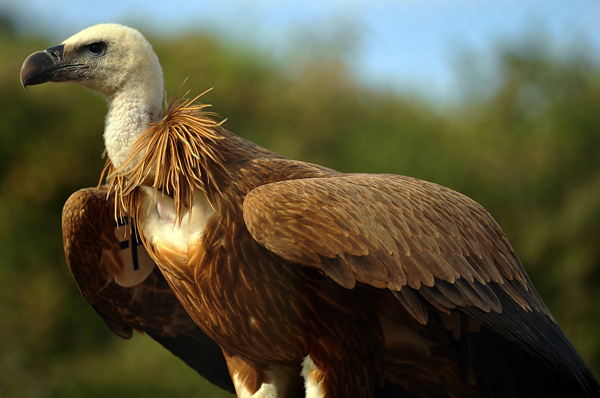 Photograph of a vulture by Hrvoje Polan/AFP/Getty Images.
Photograph of a vulture by Hrvoje Polan/AFP/Getty Images.The Vulture
Under threatening circumstances, an angry bird can aim green vomit at you from as far away as six feet. Normally, though, a turkey vulture's sociability extends to human beings as well as to its fellows. The people who care for injured wild birds report that vultures are gentle, inquisitive, and smarter than hawks and eagles. Here's the bottom line, according to one expert: "Once they get to know you they don't regurgitate on you."
For more, read the full text of "Vulture World." -
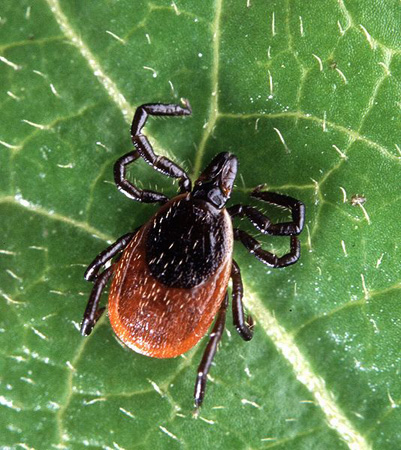 Photograph of a deer tick by the United States Department of Agriculture.
Photograph of a deer tick by the United States Department of Agriculture.The Tick
Ticks not only extract blood, they ooze pathogens from their salivary glands into the wound they've sliced with their tiny claws and penetrated with their barbed mouthparts. … I managed to locate Willy Burgdorfer, the scientist who identified the Lyme spirochete in 1982, and asked, "Why did God make ticks?"
"I don't have the answer," Dr. Burgdorfer said. "There are a lot of things we assign to the good Lord and we ask the question, why? All I can advise is to check yourself for ticks and remove them fast."
For more, read the full text of "A Tick's Life." -
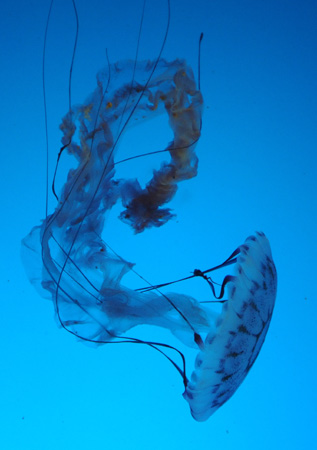 Photograph of a jellyfish by Mark Ralston /AFP/Getty Images.
Photograph of a jellyfish by Mark Ralston /AFP/Getty Images.The Jellyfish
A profusion of jellyfish is often described as an invasion or an attack. Which is laughable, given the guiding principle of jellyfish behavior—"whatever." No brain, no spine; they don't have the capacity to plan a beach invasion. We bump into them, and because we're too big to eat, they perceive us as attackers.
Planning is not their forte. In place of a brain, jellies have a nerve net. Jellyfish are the free-floating relatives of sea anemones and corals, much older than fish, and not much changed for more than 600 million years. They ruled the ocean, in their passive way, when there was almost nothing but ocean. Now they drift into their food or their food drifts into them. The pulsing creates a current that pulls prey within reach.
For more, read the full text of "The Life of a Jellyfish." -
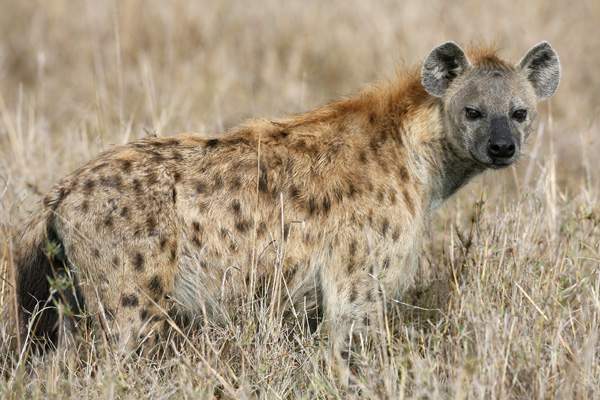 Photograph of a hyena by Dan Kitwood/Getty Images.
Photograph of a hyena by Dan Kitwood/Getty Images.The Hyena
Hyenas, particularly the African spotted hyena, with its massive jaws, hulking shoulders, and startling laugh, have been terribly misunderstood. The creatures may not be beautiful, but they don't deserve contempt. They are intelligent and gregarious with a well-organized social system of clans patrolling discrete territories. The clans are ruled by females. Maybe the female hyenas gain a little extra authority or assertiveness from the surprising fact that male and female hyenas have nearly indistinguishable external genitals, about 8 inches worth. Their appearance has aroused amazement, confusion, and sometimes disgust.
For more, read the full text of "Sad Yowlers? The story of the hyena." -
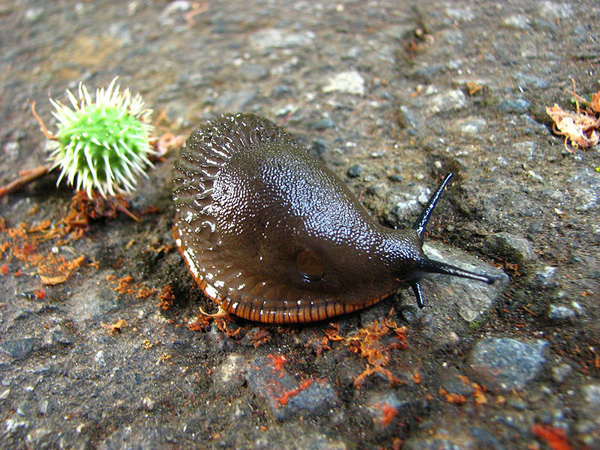 Photograph of a slug by Gregory Badon, found on Wikipedia.
Photograph of a slug by Gregory Badon, found on Wikipedia.The Slug
In most kinds of slug, the penis is about half the length of its body. ("Is that a Kalashnikov in your pocket or are you just glad to see me?") It's not clear why such anatomical grandeur might be important for survival: Slug experts discount the idea that the oversize penis functions like a peacock tail, as a display of virility—they point out that the chemical signaling and seduction occurs before the magisterial organs even come into view. In any event, the chosen mate isn't likely to be impressed, since most slugs possess both male and female sexual organs. During a single coupling, slugs can mate reciprocally—with each partner inseminating and being inseminated—or one can serve as the recipient.
For more, read the full text of "Feeling Sluggish." -
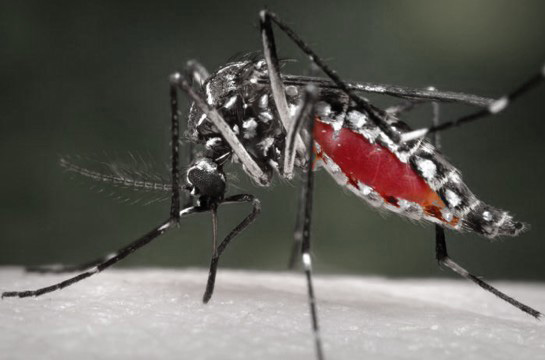 Photograph of a mosquito by Leslie Vosshall lab at Rockefeller University.
Photograph of a mosquito by Leslie Vosshall lab at Rockefeller University.The Mosquito
Biology professors like to ask what animal kills the most people. Their poor students humiliate themselves by calling out grizzly bear, tiger, cobra, even hippo. The right answer, of course, is the female mosquito—no fur, no fangs, just a hypodermic needle on the wing. She's less than a quarter-inch long, has six legs, and is the most efficient transmitter of disease in the animal kingdom. She uses scent to find us, attracted by the lactic acid and other ingredients in perspiration. She also senses the carbon dioxide in our exhalations and follows the slipstream back to our faces. The more you sweat and pant as you shoo her away, the more attractive you become.
For more, read the full text of "A Hypodermic Needle With Wings." -
 Jupiterimages/Thinkstock
Jupiterimages/ThinkstockThe Centipede
When centipedes start galloping after some tasty morsel, how do they decide which leg to move first? Did some Ordovician ancestor obsess over the matter, and trip over its very many ankles? Like good tap dancers the ones that survived seem to have gotten the message: Don’t over-think it.
For more, read the full text of “Cranky Little Bastards”